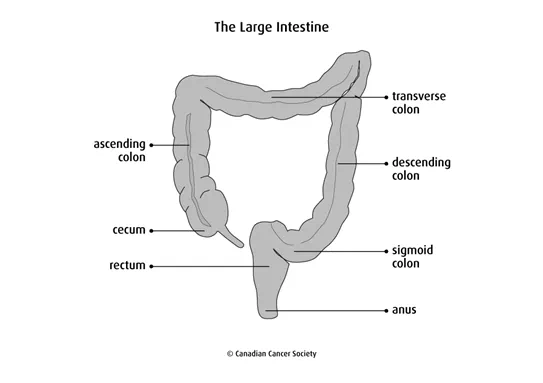Sigmoidoscopy
A sigmoidoscopy lets the doctor look at the lining of the sigmoid colon (the part of
the large intestine closest to the rectum) and the rectum using an
The endoscope used is also called a sigmoidoscope. It can be flexible, which means that it bends. It can also be rigid, which means that it is straight and stiff. A flexible sigmoidoscope is used more often than a rigid sigmoidoscope.

Why a sigmoidoscopy is done
A sigmoidoscopy may be done to:
- look for causes of changes in bowel habits, such as constipation or diarrhea, bleeding from the rectum, blood or pus in the stool (poop) or pain in the abdomen
- follow up after abnormal results from tests such as a stool test, a barium enema, a CT scan or an MRI
- check for colorectal cancer or polyps
- remove polyps or hemorrhoids
- collect tissue for testing (called a biopsy)
- follow up after treatment for inflammatory bowel disease
- follow up after treatment for rectal cancer
Screening for colorectal cancer may include a sigmoidoscopy in people at high risk. Find out more about screening for colorectal cancer.
How a sigmoidoscopy is done
A sigmoidoscopy is usually done in a doctor’s office. It takes about 5 to 15 minutes. It will take slightly longer if tissue is taken for biopsy or if polyps are removed. You do not usually need to be sedated for a sigmoidoscopy.
Preparation for a sigmoidoscopy usually includes:
- following a clear liquid diet the day before the test
- taking laxatives, having enemas or both to completely empty the colon
You can expect the following during a sigmoidoscopy:
- You will probably be asked to lie on your left side with your knees pulled up. You may be asked to kneel on the table with your buttocks raised in the air.
- Before the sigmoidoscopy, the doctor checks if anything is blocking the rectum by inserting a gloved finger into the anus and rectum (called a digital rectal exam, or DRE).
- The doctor inserts the sigmoidoscope through the anus and into the rectum and sigmoid colon. Air is pumped into the colon to stretch the lining so that the entire surface can be seen. You may feel some discomfort and pressure. It is normal to feel like you need to pass gas.
- Small tools may be passed through the sigmoidoscope to collect biopsy samples, remove polyps and stop bleeding. Biopsy samples and polyps are sent to a lab for testing.
After a sigmoidoscopy, most people can go home and continue their normal diet, medications and activities. If you were sedated during the test, you won’t be able to drive or operate machinery for 24 hours. Make sure you have someone to drive you home after the test.
Side effects
Common side effects of a sigmoidoscopy include:
- cramping or discomfort in the lower abdomen
- bloating
- gas
- diarrhea
- bleeding from the rectum
In rare cases, a sigmoidoscopy can make a small hole (puncture) in the colon. Surgery may be needed to repair the hole.
What the results mean
An abnormal result may show:
- hemorrhoids (enlarged, swollen veins inside or outside of the anus)
- polyps (growths attached to the colon or rectum)
-
diverticulosis ( abnormal pouches in the lining of the colon) - inflammatory bowel disease, such as ulcerative colitis
- cancer of the colon or rectum
What happens if the results are abnormal
Your doctor may recommend more tests, procedures, follow-up care or treatment.
Special considerations for children
Preparing children before a test or procedure can help lower their anxiety, increase their cooperation and develop their coping skills. This includes explaining to children what will happen during the test, such as what they will see, feel and hear.
Preparing a child for a sigmoidoscopy depends on the age and experience of the child. Find out more about helping your child cope with tests and treatments.
